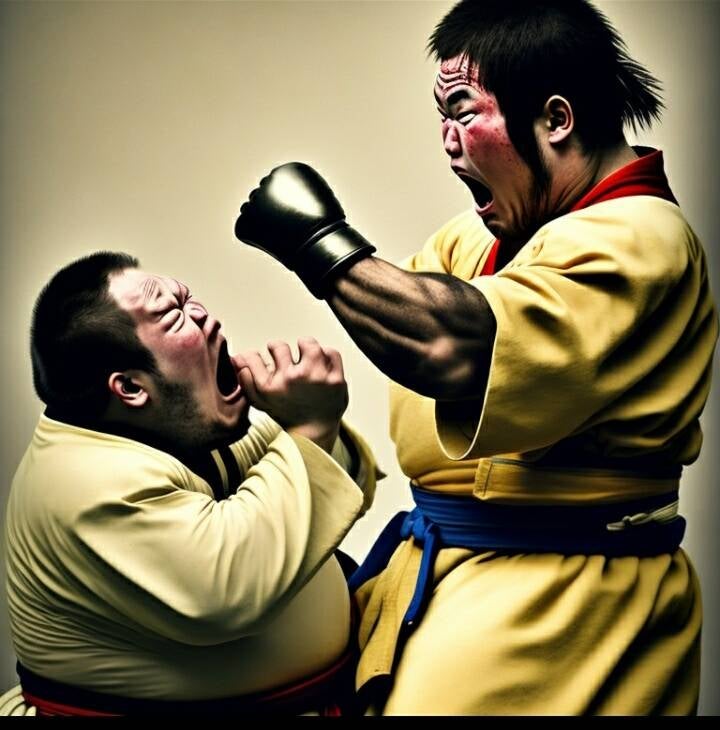
Judo is one of the most popular martial arts in the world, and it has a fascinating history stretching back over 130 years. The sport was founded in Japan in the late 19th century by a young athlete named Jigoro Kano, who was looking for a way to improve his physical fitness and develop his character. Over time, judo has become much more than just a martial art – it has become a way of life for millions of people around the world.
In this article, we will explore the history of judo and its relation to jujitsu. We will begin by looking at the origins of jujitsu and how it evolved into judo, and then we will explore how judo spread around the world and became an Olympic sport. We will also examine the differences between judo and jujitsu and how they have influenced each other over the years.
Origins of Jujitsu
Jujitsu is a Japanese martial art that dates back to the feudal era of Japan, some 700 years ago. During this time, Japan was in a state of almost constant warfare, and warriors known as samurai were the dominant class. These samurai needed a way to defend themselves in close combat, so they developed a system of martial arts known as jujitsu.
Jujitsu was designed to be used in close combat situations, where weapons were not available or had been lost. The art focused on using leverage, throws, and joint locks to defeat an opponent. Jujitsu practitioners were trained to use their opponent's strength against them, using momentum and leverage to turn their enemy's attacks back on them.
As Japan modernized in the late 19th century, the need for jujitsu as a military skill diminished. Samurai warriors were no longer the dominant class, and guns and other modern weapons had made martial arts techniques less useful on the battlefield. However, jujitsu had already found a new purpose – as a popular sport among Japanese martial arts enthusiasts.
The Evolution of Judo
It was in this environment that Jigoro Kano, a young martial artist and educator, began to develop his own martial art. Kano was passionate about physical fitness, and he believed that martial arts could teach valuable life skills to his students. However, he was dissatisfied with the purely combative nature of jujitsu – he wanted to create a martial art that emphasized safety, mutual respect, and personal development.
To achieve this goal, Kano began to modify and refine the techniques of jujitsu to make them safer and more effective. He focused on throws and takedowns rather than strikes and kicks, and he eliminated the more dangerous joint locks and chokes. He also developed a system of rankings and promotions that rewarded not just physical skill but also good character and sportsmanship.
In 1882, Kano opened his own martial arts school, which he called the Kodokan. There, he began to teach his new martial art, which he called judo – meaning "the gentle way." The name reflected Kano's belief that martial arts could be a force for good in the world, promoting peace, respect, and cooperation.
Kano's judo quickly became popular in Japan, and he began to promote it overseas. In 1906, he sent a team of his top students to the United States to demonstrate the art, which led to the founding of the first judo club outside of Japan. Over time, judo continued to spread around the world, becoming one of the most popular martial arts on the planet.
Judo in the Olympics
In 1964, judo was introduced as an Olympic sport for the first time, at the Olympic Games in Tokyo. It was a watershed moment for the sport, bringing it to the attention of a global audience and firmly establishing it as one of the most popular martial arts in the world.
Since then, judo has become a regular feature of the Olympic Games, with both men's and women's events. Many of the world's best athletes compete in judo, and the sport has produced some truly legendary figures, such as Toshihiko Koga, Anton Geesink, and Teddy Riner.
Differences Between Judo and Jujitsu
While judo and jujitsu share a common ancestry, the two martial arts have many differences. Judo is more sport-oriented than jujitsu and focuses more heavily on throws and takedowns. Jujitsu, on the other hand, is more focused on ground fighting and uses a wider variety of techniques, including strikes and kicks, joint locks, and chokes.
Another key difference between the two arts is the emphasis on competition. Judo competitions are highly organized and structured, with strict rules and regulations governing technique and behavior. Jujitsu, on the other hand, is more open-ended, with a greater emphasis on self-defense and more variety in the techniques used.
Judo and Jiu-Jitsu are similar in that they are both martial arts that focus on grappling and submissions. They both also teach self-defense techniques and emphasize the importance of discipline, focus, and respect. Additionally, both Judo and Jiu-Jitsu were developed in Japan and have influenced other martial arts around the world. However, Judo focuses more on throws and takedowns, while Jiu-Jitsu is more ground-oriented and focuses on joint locks and chokes.
Add comment
Comments